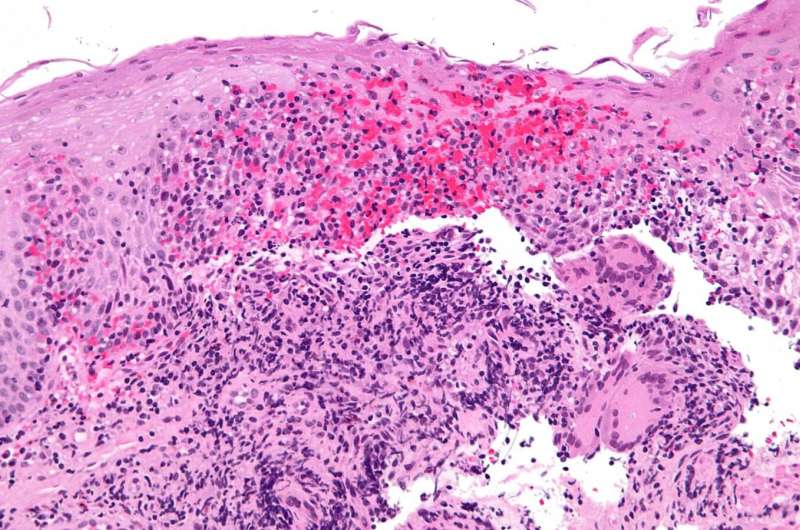 [
[

The American Gastroenterological Association (AGA) has released a comprehensively updated clinical guideline on the pharmacological management of moderate-to-severe Crohn’s disease. The new guideline uses cutting-edge network meta-analyses to recommend prescribing medications based on patients’ prior treatments for moderate-to-severe Crohn’s disease.
The guideline, published in Gastroenterology, organizes treatments by efficacy to simplify decision-making for gastroenterologists and more than 3 million people worldwide living with Crohn’s disease. This living guideline reflects the rapid pace of innovation in medical therapies for Crohn’s disease and provides clinicians with timely, evidence-based guidance to improve patient outcomes. The guideline incorporates new medications and the latest data to support comprehensive, patient-centered care.
“The science in Crohn’s disease is moving quickly, and our goal was to translate that evidence into clear, meaningful recommendations for front-line clinicians,” said guideline author Siddharth Singh, MD, MS. “It’s patient-centered but also provider-centric. We want to help physicians and advanced practice providers make timely, actionable decisions for their patients.”
Key updates
In the guideline, AGA recommends infliximab, adalimumab, ustekinumab, risankizumab, mirikizumab, guselkumab, or upadacitinib, and suggests certolizumab pegol or vedolizumab for moderate-to-severe Crohn’s disease.
Importantly, AGA also emphasizes the early use of these advanced therapies compared to step-up approaches using corticosteroids or immunomodulators before these medications.
For patients who have not previously received advanced therapies, preferred options include higher efficacy agents such as infliximab, adalimumab, vedolizumab, ustekinumab, risankizumab, mirikizumab, or guselkumab.
For patients who have previously been treated with advanced therapies, preferred options include higher- or intermediate-efficacy agents such as adalimumab, risankizumab, guselkumab, upadacitinib, ustekinumab, or mirikizumab, over lower-efficacy agents.
Additionally, AGA suggests against using thiopurine monotherapy to induce remission but supports its use over no treatment for maintaining corticosteroid-induced remission.
“These recommendations are about helping patients and providers make informed choices,” Dr. Singh said. “Our goal is to empower shared decision-making and ensure these evidence-based options are accessible and covered by insurance.”
Guideline panel chair and author Frank I. Scott, MD, MSCE, underscored the significance of expanding access to advanced therapies.
“Patients should recognize that there are now multiple treatment options available to them, regardless of where they are in their treatment journey,” Dr. Scott said. “These guidelines highlight those options—and they call for payers to align their formularies with evidence-based medicine.”
The guideline also challenges insurance-driven step therapy, recommending early initiation of high-efficacy medications to prevent disease progression.
“We didn’t write this guideline to follow insurance rules,” Dr. Singh noted. “Insurance coverage should follow the evidence.”
Knowledge gaps and future directions
The guideline panel identified key areas requiring further research, including the use of combination therapy with non-TNF advanced agents and whether targeting endoscopic remission (versus clinical remission) yields additional benefit.
As a living guideline, the authors will conduct semiannual reviews of this body of evidence, and recommendations will be updated when indicated.
Understanding Crohn’s disease
Crohn’s disease causes inflammation (pain and swelling) in the gastrointestinal (GI) tract, also called the digestive system. Inflammation from Crohn’s disease can make it hard to take in nutrients during digestion. Crohn’s disease can have times of remission (when there is no pain or swelling) and relapse (when pain and swelling returns).
While there is no cure for Crohn’s disease, there are treatments that can help.
The most common part of the body affected is the lower part of the small intestine, called the ileum, and the first part of the colon. However, Crohn’s disease can show up in any part of the GI tract, from the mouth to the anus.
Learn more at the AGA GI Patient Center.
See all AGA resources on Crohn’s disease in our provider toolkit.
More information:
AGA Living Clinical Practice Guideline on the Pharmacologic Management of Moderate-to-Severe Crohn’s Disease, Gastroenterology (2025). DOI: 10.1053/j.gastro.2025.09.038
Citation:
Crohn’s disease treatment guidance is streamlined as new therapies expand options (2025, November 20)
retrieved 20 November 2025
from https://medicalxpress.com/news/2025-11-crohn-disease-treatment-guidance-therapies.html
This document is subject to copyright. Apart from any fair dealing for the purpose of private study or research, no
part may be reproduced without the written permission. The content is provided for information purposes only.






















